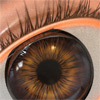- Sun Aug 07, 2005 5:09 pm
#54338
Kabe, are you familiar with Mental Ray?
"In addition to built-in shaders, user-defined shaders written in standard C can be precompiled and linked at runtime, or can be both compiled and linked at runtime. User-defined shaders can be used in place of any built-in shader, redefining materials, textures, lights, environments, volumes, displacements etc.
mental ray can link in user-defined shaders in either object, source, or dynamic shared object (DSO) form.
Every user-defined shader must be declared before it can be used. (see shader declaration) A declaration is a statement that names the shader, and lists the name and type of all its parameters. Declarations may appear in the .mi file, but are typically stored in an external file included at run time."
Are you telling me that this system used by Mental Ray for years and used by hundreds of production houses is one of those CBI™ things you keep mentioning?
I think you are at fault to first of all think from a programmers point of view. Before any code is written, we have to decide the exact workflow, the best and most convenient possible workflow.
It's when you keep adapting the user to the software that later you are forced to make more and more hacks, because the user demands further functionality, which unfortunately you have excluded from the beginning. After 5-6 revisions, you come to the conclusion that it's time for a complete rewrite of the system. It's not a good start IMO.
Lets first discuss how we would like this connection to work.
Personally I think there's little point in discussing connections without discussing how a 'live' link is to be kept between host app and Maxwell, to avoid retexturing everything on the slightest change. If we can't have this, than it's absolutely no use talking about a Maxwell connection, because there would be no workflow at all.
We agree that all material params cannot be set in the host plugins right?
So, we have to set them in some sort of Maxwell material editor. How will those materials be stored, how can they be linked to the scene so you don't have to re-texture, how can these materials be re-used in other scenes in the most efficient and fastest way?
"In addition to built-in shaders, user-defined shaders written in standard C can be precompiled and linked at runtime, or can be both compiled and linked at runtime. User-defined shaders can be used in place of any built-in shader, redefining materials, textures, lights, environments, volumes, displacements etc.
mental ray can link in user-defined shaders in either object, source, or dynamic shared object (DSO) form.
Every user-defined shader must be declared before it can be used. (see shader declaration) A declaration is a statement that names the shader, and lists the name and type of all its parameters. Declarations may appear in the .mi file, but are typically stored in an external file included at run time."
Are you telling me that this system used by Mental Ray for years and used by hundreds of production houses is one of those CBI™ things you keep mentioning?
I think you are at fault to first of all think from a programmers point of view. Before any code is written, we have to decide the exact workflow, the best and most convenient possible workflow.
It's when you keep adapting the user to the software that later you are forced to make more and more hacks, because the user demands further functionality, which unfortunately you have excluded from the beginning. After 5-6 revisions, you come to the conclusion that it's time for a complete rewrite of the system. It's not a good start IMO.
Lets first discuss how we would like this connection to work.
Personally I think there's little point in discussing connections without discussing how a 'live' link is to be kept between host app and Maxwell, to avoid retexturing everything on the slightest change. If we can't have this, than it's absolutely no use talking about a Maxwell connection, because there would be no workflow at all.
We agree that all material params cannot be set in the host plugins right?
So, we have to set them in some sort of Maxwell material editor. How will those materials be stored, how can they be linked to the scene so you don't have to re-texture, how can these materials be re-used in other scenes in the most efficient and fastest way?
Maxwellzone.com - tutorials, training and other goodies related to Maxwell Render
Youtube Maxwell channel
Youtube Maxwell channel





 - By Mark Bell
- By Mark Bell - By Mike Amos 20251018183343
- By Mike Amos 20251018183343